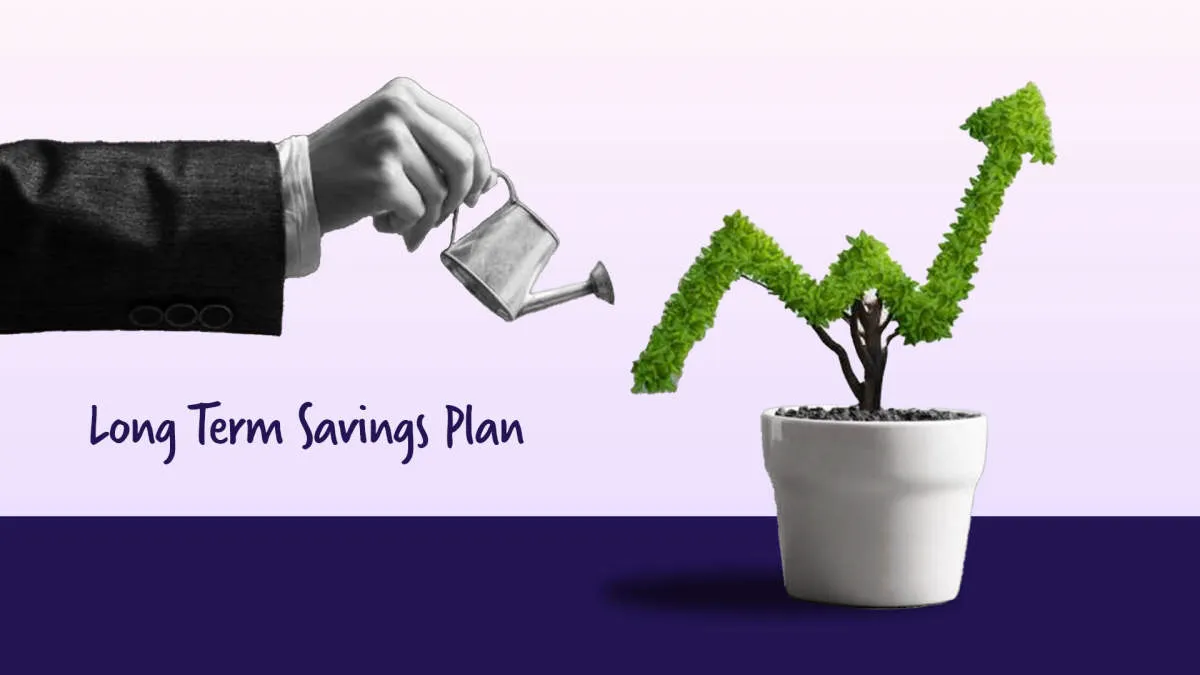Planning for an early retirement requires strategic financial foresight and discipline. Learn key steps to effectively manage your finances and set yourself up for a secure and comfortable retirement.
Importance of Early Retirement Planning
Early retirement planning is crucial for anyone who dreams of leaving the workforce ahead of the traditional retirement age. It’s not just about amassing wealth; it’s about creating a financial roadmap that allows you to live comfortably and pursue your passions without the constraints of a job.
Here’s why prioritizing early retirement planning is essential:
Time: Your Greatest Asset
Time is your most valuable resource when it comes to retirement planning. The earlier you start, the more time your investments have to compound and grow. Even small contributions made consistently over a longer period can snowball into a significant retirement nest egg.
Financial Freedom and Flexibility
Early retirement planning isn’t just about retiring early; it’s about achieving financial freedom. Having a robust retirement plan provides the flexibility to make life choices without being solely driven by financial considerations. Whether it’s traveling the world, starting a business, or simply enjoying more leisure time, early planning gives you the freedom to design your ideal future.
Unforeseen Circumstances
Life is unpredictable. Unexpected events like health issues, job loss, or economic downturns can derail even the most well-laid plans. Having a solid early retirement plan in place acts as a financial safety net, providing peace of mind and a buffer against unforeseen circumstances.
Setting Retirement Goals

Early retirement hinges on meticulous planning, and that begins with defining clear and specific retirement goals. Without a vision of what you want your retirement to look like, it’s challenging to map out the financial steps needed to get there.
Start by considering these key aspects:
Lifestyle
Envision your ideal day-to-day life in retirement. Do you crave adventure, relaxation, or a blend of both? Consider:
- Travel: Will you be a globetrotter or prefer staycations?
- Hobbies: Do you plan to pursue expensive passions or simpler pleasures?
- Housing: Will you downsize, relocate, or remain in your current home?
Timeline
Pinpoint your target retirement age. The earlier you aim to retire, the more aggressive your savings and investment strategies need to be.
Expenses
Create a realistic retirement budget. Factor in essential expenses like housing, healthcare, and food, as well as discretionary spending on travel, entertainment, and hobbies. Remember that inflation can erode purchasing power over time, so consider its potential impact.
By defining your retirement vision, you establish concrete targets for your financial planning. This clarity empowers you to make informed decisions about saving, investing, and ultimately, achieving the retirement you desire.
Creating a Savings Plan
Early retirement hinges on a robust savings plan. It’s not just about socking away a few dollars here and there – it requires a strategic approach with clearly defined goals and consistent action.
1. Define Your Retirement Vision and Goals
Start by envisioning your ideal early retirement. Where do you see yourself living? What activities will fill your days? How much will you need to support your lifestyle? Quantify these aspirations by estimating the annual income you’ll require. Once you have a concrete financial target, you can break down your savings goals into manageable milestones.
2. Determine Your Savings Rate
Your savings rate is the cornerstone of your plan. Aim for a rate significantly higher than the average, as early retirement necessitates accelerated wealth building. Consider saving and investing 50% or more of your income. The higher you can push this number, the faster you’ll reach your goal.
3. Explore High-Yield Savings Options
Don’t settle for meager returns on your hard-earned savings. Explore high-yield savings accounts, money market accounts, and certificates of deposit (CDs) to maximize your interest earnings while maintaining liquidity for short-term needs.
4. Embrace Investing
While saving is crucial, investing is where your money truly grows. Explore a diversified portfolio of stocks, bonds, and real estate, aligning your investments with your risk tolerance and retirement timeline. Consider consulting with a financial advisor to develop a tailored investment strategy.
5. Automate Your Savings
Make saving effortless by automating regular transfers from your checking account to your savings and investment accounts. This “pay yourself first” strategy ensures that you prioritize saving before discretionary spending.
Investing for Long-Term Growth

Investing is a crucial aspect of planning for early retirement. It is the engine that will drive your savings to their full potential and help you achieve financial independence sooner. This is not about getting rich quickly; it’s about making strategic decisions that yield substantial returns over an extended period. Here’s what you need to consider:
Understanding Your Risk Tolerance
Your risk tolerance refers to how much volatility you’re comfortable with in your investment portfolio. Early in your retirement planning journey, you likely have a longer time horizon, which often translates to a higher risk tolerance. You can afford to weather market fluctuations and recover from potential losses. As you get closer to your retirement date, your risk appetite may decrease, prompting you to shift towards more conservative investment options.
Diversification is Key
Diversification is the cornerstone of any sound investment strategy, especially for long-term growth. By spreading your investments across different asset classes like stocks, bonds, and real estate, you mitigate risk. When one asset class underperforms, others may compensate, stabilizing your portfolio’s overall growth.
Consider Tax-Advantaged Accounts
Explore tax-advantaged retirement accounts like 401(k)s or Roth IRAs. These accounts offer tax benefits that can significantly boost your retirement savings over time. Contributions to traditional 401(k)s and IRAs are typically tax-deductible, while Roth IRA withdrawals in retirement are tax-free. Understanding the nuances of these accounts can make a substantial difference in your long-term returns.
Stay Informed and Review Regularly
The financial landscape is constantly evolving. Staying informed about market trends, economic indicators, and potential risks is essential for making informed investment decisions. Regularly review your investment portfolio and consult with a financial advisor to ensure your strategy aligns with your goals and risk tolerance as you move closer to your early retirement goal.
Reducing Living Expenses
Early retirement hinges on a crucial principle: spending less than you earn. While increasing income is beneficial, reducing living expenses offers a powerful lever to accelerate your journey to financial freedom. Here’s how to strategically downsize your lifestyle without sacrificing happiness:
Housing
Housing often constitutes the largest expense. Explore these options:
- Downsizing: Moving to a smaller home can significantly reduce mortgage payments, property taxes, and utilities.
- Relocating: Consider moving to a city or region with a lower cost of living.
- Renting a room: Supplement your income by renting out a spare room.
Transportation
Transportation costs can easily add up. Explore these alternatives:
- Public Transportation: Utilize buses, trains, or subways to reduce fuel and vehicle maintenance expenses.
- Biking or Walking: Embrace eco-friendly options like biking or walking for shorter commutes.
- Selling a vehicle: If feasible, consider downsizing to one car or going car-free.
Food
Eating well doesn’t have to break the bank. Implement these strategies:
- Meal Planning: Plan your meals to avoid impulsive eating out and reduce food waste.
- Cooking at Home: Preparing meals at home is significantly cheaper than dining out.
- Growing your own produce: Start a small garden to supplement your grocery shopping with fresh, homegrown ingredients.
Entertainment
Entertainment is crucial for well-being but doesn’t require extravagance. Consider these:
- Free Activities: Explore free or low-cost entertainment options in your community, such as parks, museums, or local events.
- Negotiate Bills: Contact service providers like cable and internet to negotiate lower rates or explore alternative options.
- Cut unnecessary subscriptions: Evaluate streaming services, subscriptions, and memberships, and eliminate any you rarely use.
Building Multiple Income Streams

Early retirement often requires more than just savings. Generating multiple income streams can provide financial security and peace of mind. Here are a few strategies:
1. Invest in Dividend-Paying Stocks
Investing in dividend-paying stocks provides a consistent stream of passive income. As companies generate profits, they distribute a portion to shareholders in the form of dividends.
2. Explore Real Estate
Rental properties can generate substantial passive income. Whether you own a single property or multiple units, rental income can supplement your retirement funds.
3. Create and Sell Digital Products
If you have expertise in a particular area, consider creating and selling digital products like online courses, ebooks, or templates. These products can provide a source of passive income over time.
4. Consider Affiliate Marketing
Affiliate marketing involves promoting other companies’ products or services and earning a commission on sales made through your referral links. Building a website or leveraging social media can be effective platforms for affiliate marketing.
5. Start a Side Hustle
Explore your passions and skills to identify potential side hustles. Whether it’s freelancing, consulting, or selling handmade goods, a side hustle can provide an additional income stream.
Planning for Healthcare Costs
Early retirement often means navigating the complex world of healthcare without employer-provided insurance. This transition requires careful financial planning to avoid unexpected medical expenses derailing your retirement dreams.
Understanding Your Options:
- Health Savings Accounts (HSAs): If you qualify for a high-deductible health plan, an HSA offers triple tax advantages: contributions are tax-deductible, earnings grow tax-free, and withdrawals for qualified medical expenses are tax-free.
- COBRA: You can continue your employer’s health insurance for a limited time, but be prepared for potentially higher premiums.
- Individual Health Insurance Marketplace: Explore plans and subsidies available through the Affordable Care Act marketplaces.
- Medicare: Typically available at age 65. Understand enrollment periods, coverage options, and potential out-of-pocket costs.
Factoring in Costs:
Estimate potential healthcare expenses, including premiums, deductibles, co-pays, and potential long-term care needs. Factor these costs into your retirement budget and adjust your savings goals accordingly.
Staying Healthy:
Prioritizing your health is crucial. Focus on preventive care, maintaining a healthy lifestyle, and managing any existing medical conditions. This proactive approach can potentially reduce future healthcare costs.
Staying Motivated and Focused

Early retirement—it’s a tantalizing goal that requires immense discipline and dedication. The path to financial freedom can be long, and it’s easy to lose sight of your goals amidst life’s daily distractions. Here’s how to maintain your motivation and focus on securing your early retirement:
1. Visualize Your Future
Imagine yourself waking up without an alarm, free to spend your days pursuing passions or simply enjoying newfound freedom. Create a vision board, write a journal entry detailing your ideal day in retirement, or simply take a few minutes each day to visualize your future self. This powerful exercise reinforces your “why” and fuels your determination.
2. Set Milestones and Celebrate Successes
Breaking down your long-term goal into smaller, achievable milestones makes the journey feel less daunting. Celebrate each milestone reached, whether it’s hitting a savings target, paying off a debt, or reaching a new level of investing. These small victories provide a sense of accomplishment and keep you motivated for the road ahead.
3. Find an Accountability Partner or Community
Share your early retirement aspirations with a trusted friend, family member, or financial advisor who can offer support and encouragement. Even better, connect with a community of like-minded individuals striving for similar goals. Sharing your journey and learning from others can provide invaluable motivation and keep you accountable.
4. Focus on Progress, Not Perfection
Don’t get discouraged by setbacks or temporary detours. There will be unexpected expenses, market fluctuations, and moments of doubt. Remember that financial journeys are rarely linear. Acknowledge challenges as opportunities for learning and adjustment, and always keep moving forward, even if it’s with smaller steps than anticipated.
5. Regularly Review and Adjust
Life is dynamic, and your financial plan should be too. Set aside dedicated time each quarter or year to review your progress, assess your goals, and make adjustments as needed. This ensures you stay on track and adapt to any changes in your circumstances or priorities.
Conclusion
In conclusion, early retirement planning requires disciplined saving, smart investing, and a clear financial roadmap, ensuring a comfortable and secure future.

